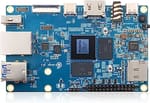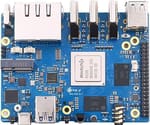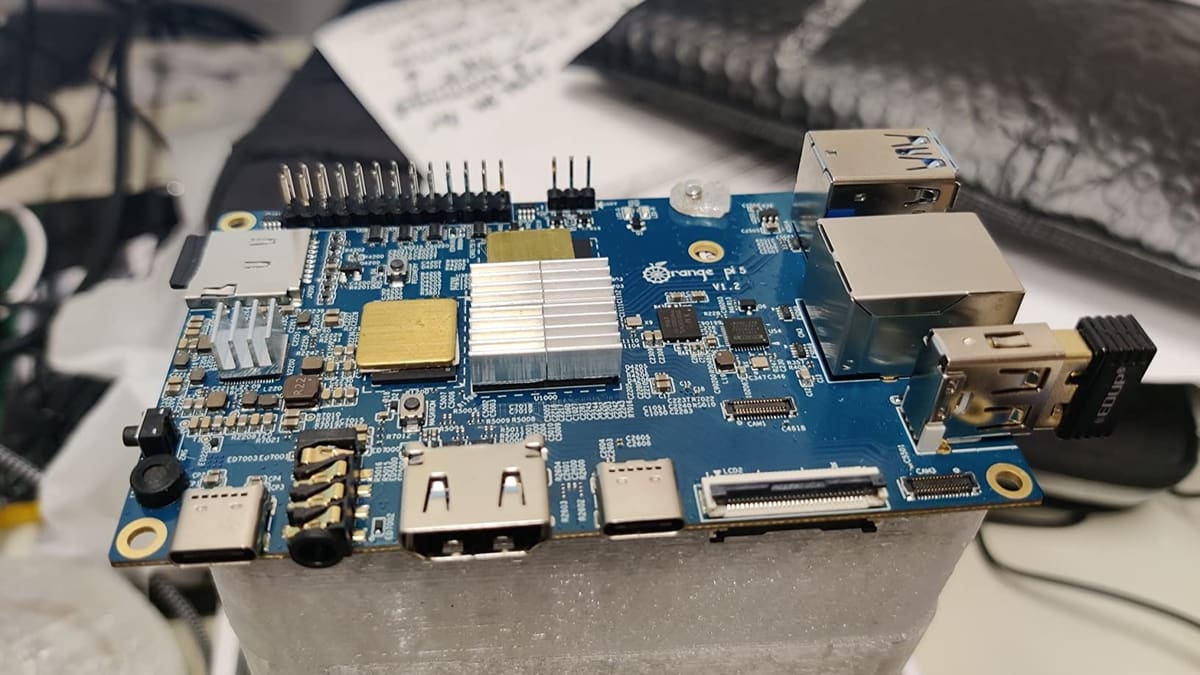Single-board computers (SBCs) are everywhere. They power the displays you use to order in a fast food restaurant, act as the brains for hundreds of robots, and (most importantly) make an excellent addition to every maker’s arsenal.
But just what is a single-board computer? An SBC is a computer whose vital components are contained on a single board. This includes the RAM, storage, and any IO you could need.
Something else you’ll often find when looking for SBCs are microcontrollers, such as those offered by Arduino. Microcontrollers (MCUs) are incredibly useful tools. However, they fill a very different niche than SBCs. Unlike SBCs, MCUs are usually lower power and are only intended to run a single program. SBCs, in contrast, are much more powerful devices; they’re full computers capable of running operating systems.
The biggest name in SBCs is undoubtedly Raspberry Pi. However, they’re far from the only player in the game. Orange Pi came onto the scene in 2014, offering an open-source SBC with powerful specifications.
In this article, we’ll be taking a look at and comparing the two newest offerings from Orange Pi: the Orange Pi 5 and Orange Pi 5 Plus. These are two excellent SBCs with a lot to offer. We’ll cover their similarities and differences, and explain which use cases each board is best suited to. Let’s get started!
The Contenders
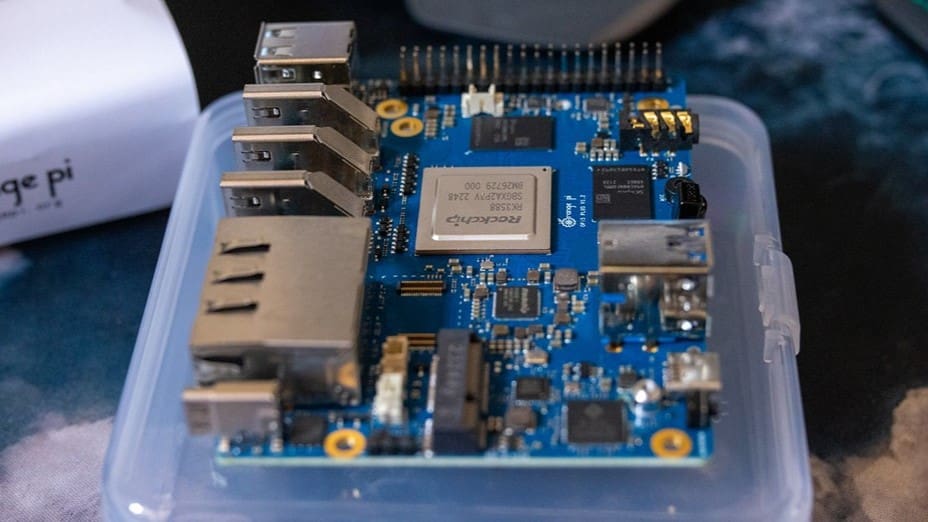
Orange Pi 5
The Orange Pi 5 is the standard offering from Orange Pi. It competes in a similar space to the Raspberry Pi 4 and 5, although with improved power efficiency and AI capabilities.
The Orange Pi 5 comes with a Rockchip RK3588S chipset, which features an 8-core CPU, split between a quad-core ARM Cortex-A76 running at 2.4 GHz and quad-core ARM Cortex-A55 running at 1.8 GHz. This big little architecture gives the board efficiency and performance in both high- and low-power tasks.
In particular, the Orange Pi 5 excels at AI applications, such as tasks involving implementing image recognition, speech recognition, and natural language processing.
Orange Pi 5 Plus
The Orange Pi 5 Plus is the big brother to the Orange Pi 5, with a larger size and more feature-rich SoC.
Instead of the RK3588S found on the Orange Pi 5, it comes with the Rockchip RK3588. This SoC shares the same 8-core architecture found in the Orange Pi 5, bringing all the same benefits. However, it has PCIe 3.0 instead of the PCIe 2.0 found on the RK3588S. This gives it the potential for faster NVMe speeds, which can make a difference if you’re using the board as a small desktop PC replacement. In addition, the dual HDMI 2.1 ports mean you can connect a couple of 4K screens.
Due to their similar SoCs, both boards have similarly impressive specifications, making them some of the best value SBCs on the market. In the next section, we’ll take a closer look at their specs and see how the two boards stack up.
The Specs at a Glance
Here’s a side-by-side comparison of each board’s most important features.
Differences
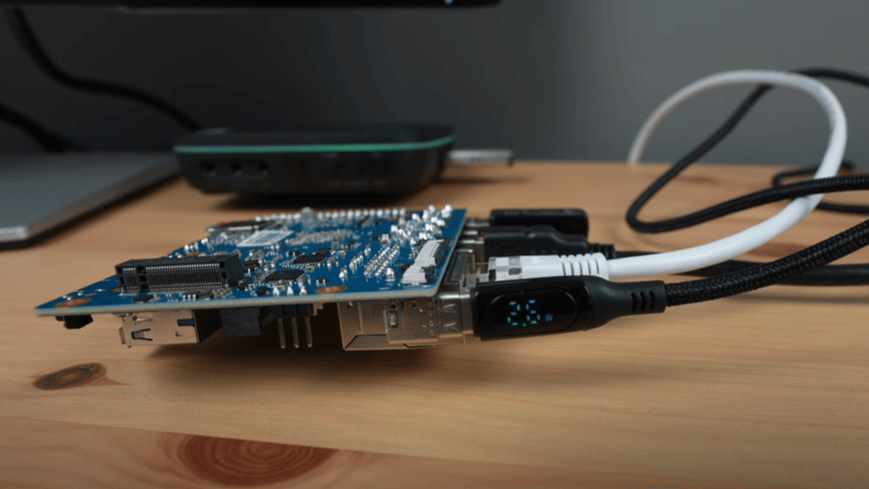
In spite of their similar specifications, the Orange Pi 5 and Orange Pi 5 Plus have some significant differences. While these may not be important for some people, they could be the deal maker or breaker for others. Let’s take a closer look.
Cameras
The Orange Pi 5 has three camera inputs, which can prove incredibly useful for computer vision use cases. On the other hand, the Orange Pi 5 Plus has only one camera input. This makes it potentially less suitable for computer vision and robotics applications. However, both SBCs have a NPU (Neural Processing Unit), which should make them well-suited to machine learning applications.
Form Factor
A big decider when choosing which SBC to buy can be form factor. While both are certainly small devices, the Plus is larger, as it has to accommodate the extra IO.
The Orange Pi 5 comes in at 62 mm × 100 mm and weighs 46 grams, while the Orange Pi 5 Plus comes in at a considerably larger 100 mm × 75 mm and 86.5 grams.
Being over 1 centimeter larger and almost twice as heavy, the Plus is clearly more suited to stationary use cases. In contrast, the smaller Orange Pi 5 may be more portable and suited to situations when size and weight need to be kept to a minimum.
Networking
While neither board comes with Wi-Fi out of the box, both offer wired networking capabilities and the option to add Wi-Fi and Bluetooth through M.2 expansion.
The Orange Pi 5 comes with a single 1-Gb/s Ethernet port (also known as RJ45 or 8P8C). There is no Wi-Fi or Bluetooth built-in, however, these can be added via the M.2 slot. There is only one M.2 slot on the board, so you’ll have to choose whether you want Wi-Fi or an SSD.
The Orange Pi 5 Plus laughs at the comparatively lesser networking capabilities of its smaller sibling. The Plus comes with two 2-Gb/s Ethernet ports and a dedicated M.2 slot for Wi-Fi, meaning you don’t have to choose between Wi-Fi and an SSD.
Storage
Both boards feature a MicroSD card slot and an M.2 slot for SSDs. However, as mentioned in the networking section, the Orange Pi 5 only has one M.2 slot. Using it for an SSD will mean it can’t be used for Wi-Fi.
The Orange Pi 5 Plus also has an extra weapon up its sleeve, namely an eMMC socket for an optional eMMC module up to 256 GB. This won’t match the speed of an NVMe SSD, but it does provide extra storage options for those who need it.
While these differences aren’t huge, it could make all the difference if you’re wanting to use the SBC for storage-intensive purposes, such as a DIY NAS (also known as “network attached storage”) or a low-cost desktop replacement.
Verdict
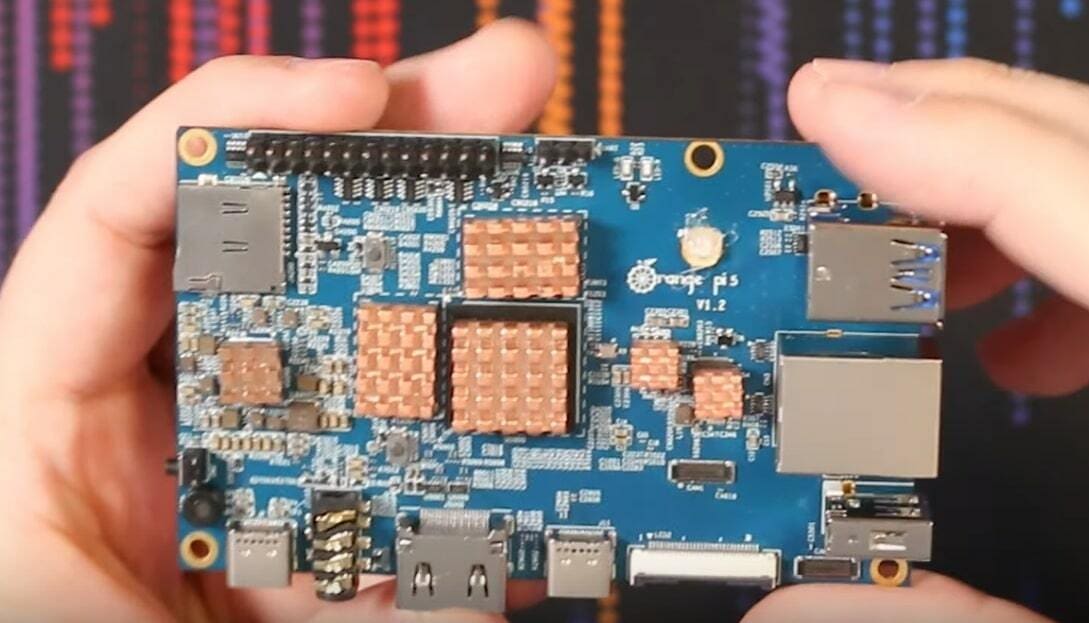
Overall, the Orange Pi 5 and 5 Plus are capable devices with similar specs. At relatively low price points, you likely can’t go wrong with either board.
Taking a look at the size, price, and various feature sets, it’s clear what each board is best suited to. The Orange Pi 5 is a great option if you want great value, a smaller and lighter board, multiple camera inputs, and computer vision use cases. Examples of projects well-suited to this board include a control board for a robotic system, a security camera, or a wildlife camera.
The Orange Pi 5 Plus, on the other hand, is a great choice for networking or storage-intensive use cases. This could include projects such as a DIY NAS, a low-cost and low-power desktop PC alternative, or an entertainment center for your TV.
While neither device comes with Wi-Fi out of the box, it’s an option for either one through M.2 expansion.
No matter which option you choose, you’ll be getting a capable SBC and excellent value for your money.
License: The text of "Orange Pi 5 vs Orange Pi 5 Plus: The Differences" by All3DP is licensed under a Creative Commons Attribution 4.0 International License.
CERTAIN CONTENT THAT APPEARS ON THIS SITE COMES FROM AMAZON. THIS CONTENT IS PROVIDED ‘AS IS’ AND IS SUBJECT TO CHANGE OR REMOVAL AT ANY TIME.

